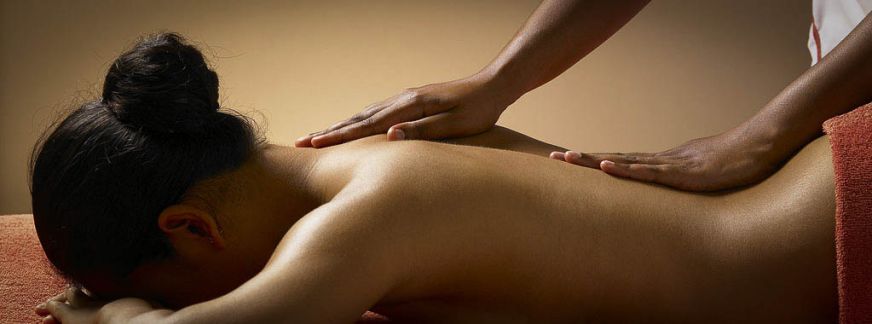
Why We Love Massage
For as long as humans have walked on two legs we have consoled each other with our hands when injured or sad. The kindly touch from other humans soothes our tears and makes our pain more manageable. Massage therapy is the formalised method of a natural impulse but what a proliferation of styles and modalities there are!
These days innovative treatments include aerial massage where the therapist suspends herself from bars and uses foot pressure to work on muscle tension, and being rolled out like pastry by heated bamboo sticks. After a long time being seen either as a luxury treatment for the pampered few or lurking behind the blackened windows of the massage parlour, massage therapy is finally mainstream in the UK. This is quite some achievement as it's only since the death of Diana Princess of Wales in 1997 that we became a nation of huggers.
Massage is coming out from behind the blackened windows of your local seedy massage parlour.
Massage was well documented in ancient times. The earliest evidence of a formalised massage therapy can be found at the dawn of civilisation on the walls of the tomb of Akmanthor in Egypt, dating from 2330BC the images show what look like reflexology treatments to hands and feet. The Egyptians had a refined system of herb-infused oils and balms used for healing, which can trace a direct line to modern aromatherapy.
Eastern massage systems have their own heritage deriving from Chinese traditional medicine and as such it is part of a vast theoretical system of health and guides for living that goes way beyond a relaxing back rub. The earliest Chinese therapy is the vigorous amna, which is still practiced in China today. Acupressure, shiatsu and Thai massage are all derived from this practice. The treatments follow the meridian lines through the body with pressure and passive stretches to strengthen the energy or chi.
Meanwhile in Europe, 1000 years before Christ, Homer's Odyssey mentions soldiers being anointed after battle to speed their recovery before returning to the front line. Rubbing the skin with herb-infused oils was part of the bathing ritual of the time, helping to condition the skin in an arid climate. This practice is not unlike the massage used as part of Ayruvedic medicine, where the infused oils are prescribed as part of a broad medical diagnosis.
Hippocrates, known as the Father of western medicine, also anointed his patients and used friction to assist in healing. Massage became part of the life of the gymnasium in Ancient Greece and was adapted by the Romans too in their social bathing.
Randomized controlled trials shows that massage positively affects a wide range of physical ailments.
The next 1600 years were a quiet period for massage therapists, it wasn't much practiced until 16th century French surgeon Ambroise Pare (1517-90) promoted and developed the use of massage for medical purposes. He was the personal physician to four French kings and is said to have successfully treated Mary Queen of Scots.
European massage didn't become formalised until 1800, when Swedish fencing master Per Herrik Ling, started to use massage as part of the Swedish gymnastic movement. Used to keep the fencing students lithe and nimble, he documented various ways of touching that are still used by massage therapists today.
Double blind studies on the effects of massage are impossible to run, as it would be easy to tell if a human or something else was massaging you or not, and even light touch will have an effect. However there has been research done with randomized controlled trials that shows that massage positively affects:
Pain relief
Circulation and lymph flow
Speeding recovery from injury
Reducing cortisol
Lowering blood pressure
Though any massage would be expected to create relaxation and maybe even a calmer mind, the psychological effects of massage are less well known. For example Maj Arthur Hurst used massage successfully after World War I as part of a system for treating the many men devastated by shell shock. Up until then shell shock was generally treated by solitary confinement.
Modern research shows that regular massage helps to:
Reduce susceptibility to anxiety
Reduce subclinical depression
Activate the parasympathetic nervous system
Release endorphins and serotonin
Release the love hormone oxytocin
If you have ever been bewildered by the vast and surprising range of massage therapies available and wondered which style would help your particular issues, you can check in to our upcoming series on massage styles to help you find the perfect treatment.










